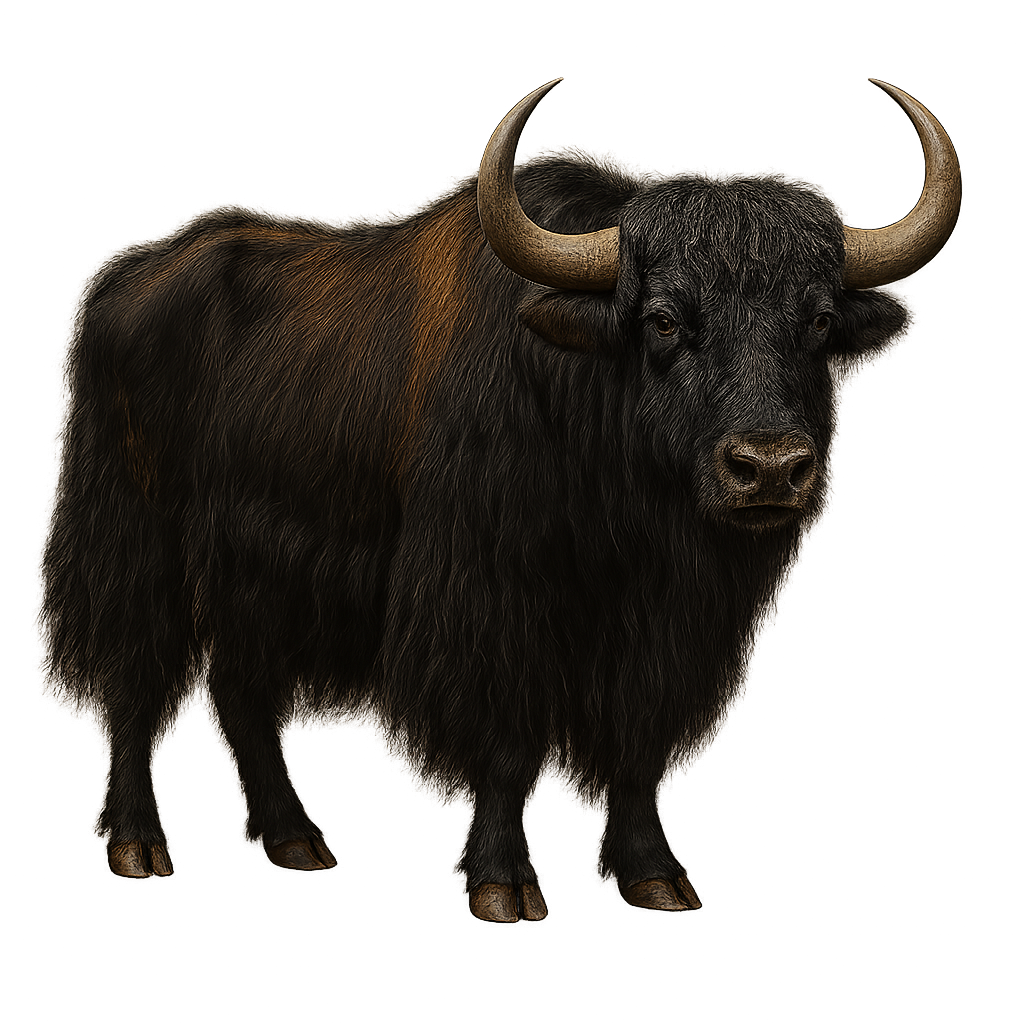Observe and photograph a species in its natural habitat
Learn where and when to observe a species in the wild, how to recognize it in the field, and what habitats it lives in. Get photography tips adapted to its behavior and capture stunning images without disturbing the animal. For full details, open the complete profile in the WildlifePhotographer app.
Wild Yak
Scientific name: Bos mutus

IUCN Status: Least Concern
Family: BOVIDAE
Group: Mammals
Shyness: Suspicious
Safe distance: 100 m
Breeding season / Courtship: 01.09-31.10
Gestation: 9 mois
Births: 01.06-30.06
Habitat:
Mountains, cold regions
Description:
The Wild Yak is a large species of cattle native to the mountains of the Himalayas, Tibet, and the high plateaus of Central Asia. It typically measures about 2 to 3 meters in length and weighs between 400 and 1,000 kg. Its coat is long, thick, and woolly, ranging from black to brown, which helps it survive in extreme cold conditions. The Wild Yak is primarily herbivorous, feeding on grasses, lichens, and woody plants. It lives in herds in mountainous environments at high altitudes, often above 3,000 meters. While it is a protected species in some areas, the Wild Yak is threatened by illegal hunting and habitat loss due to urbanization and excessive grazing.
Recommended lens:
>=70-200 mm
Photography tips:
Approach slowly and discreetly, using a telephoto lens to capture images at a distance, as the wild yak is a robust animal that may become nervous or defensive if it feels threatened.
Photograph early in the morning or late in the afternoon, when the light is soft, and the wild yak is more active, often grazing or moving through meadows or mountainous areas.
Capture moments of natural behavior: The wild yak is often seen in groups in mountainous or high-altitude environments, creating beautiful opportunities for group photos or dynamic moments in motion.
Be patient and respectful: The wild yak is a discreet animal that can be difficult to spot in its habitat. Wait for moments when it is more visible and do not disturb its natural behavior.
The wild yak is a vulnerable species, due to the loss of its natural habitat, poaching, and crossbreeding with domesticated yaks. It is essential to respect its natural space and not disrupt its feeding or social behaviors. Follow local conservation rules to preserve this species and its mountainous habitat.
Ready to take action?
Choose your platform and start your free trial today



